Related Research Articles
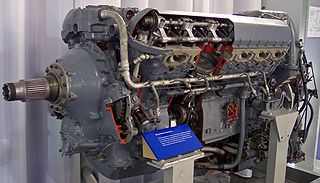
The Rolls-Royce Griffon is a British 37-litre capacity, 60-degree V-12, liquid-cooled aero engine designed and built by Rolls-Royce Limited. In keeping with company convention, the Griffon was named after a bird of prey, in this case the griffon vulture.

The Continental O-170 engine is the collective military designation for a family of small aircraft engines, known under the company designation of A50, A65, A75 and A80. The line was designed and built by Continental Motors commencing in the 1940s. It was employed as the powerplant for civil and military light aircraft.

The Anzani 10 was a 1913 10-cylinder air-cooled radial aircraft engine. It powered several experimental aircraft and also the later production versions of the Caudron G.3 reconnaissance aircraft, the Caudron G.4 bomber/trainer and the first production Cessna, the Model AA.

The Argus As II was a six-cylinder, in-line, water-cooled, aircraft engine produced in Germany by Argus Motoren in 1914. The Argus As II produced 120 hp (89 kW) at 1,350 rpm.

The Praga B2 was a low powered aero engine suitable for very light aircraft. It dates from the mid-1930s.
One of Avia's own designs, the 1930s Avia Rk.12 was a seven-cylinder radial engine with a rated output of 150 kW (200 hp), built in Czechoslovakia.

The Avia Rk.17 was a 9-cylinder radial aircraft engine, developed from the 7-cylinder Avia Rk.12, with a rated output of 270 kW (360 hp). The Rk.17 was one of Avia's own designs and was built in Czechoslovakia in the 1930s.
The Lorraine 9N Algol was a French 9-cylinder radial aeroengine built and used in the 1930s. It was rated at up to 370 kW (500 hp), but more usually in the 220–300 kW (300–400 hp) range.
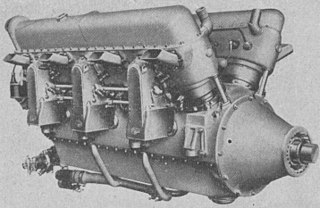
The Lorraine 12H Pétrel was a French V-12 supercharged, geared piston aeroengine initially rated at 370 kW (500 hp), but later developed to give 640 kW (860 hp). It powered a variety of mostly French aircraft in the mid-1930s, several on an experimental basis.

The Asso XI was a family of water-cooled, supercharged V12 piston aeroengines produced in the 1930s by Italian manufacturer Isotta Fraschini, and fitted on a number of aircraft types built by CANT, Caproni and others.
The Train 2T, 4T and 6T were low power piston engines for light aircraft, produced in France. They were inverted, air-cooled in-line engines with the same bore and stroke, differing chiefly in the number of cylinders.
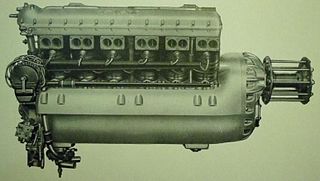
The Fiat A.24 was an Italian water-cooled aircraft engine from the 1920s, built in modest numbers. It produced 520 kW (700 hp).

The Fiat A.30 R.A. was an Italian water-cooled aircraft engine from the 1920s, built in large numbers and serving with several air forces up to the beginning of World War II. It produced 447 kW (600 hp).
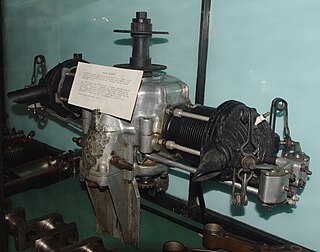
The Saroléa Albatros was a 22 kW (30 hp) flat twin air-cooled aircraft engine, produced just before World War II in Belgium.

The Lorraine 14A Antarès was a French 14-cylinder radial aero engine built and used in the 1930s. It was rated in the 370 kW (500 hp) range.

The Potez 6D is a French six cylinder inverted inline aircraft engine put into production after World War II in normal and supercharged versions. Unsupercharged, it produced a take-off power of 179 kW (240 hp) at 2,530 rpm.
The Potez 8D is the largest member of the Potez D series of air-cooled piston aircraft engines which share several common features. It is a supercharged eight cylinder inverted engine with a take-off power of 373 kW (500 hp).
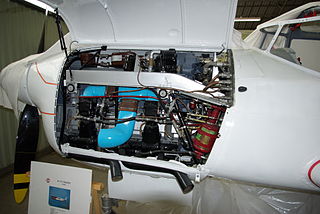
The Renault 6Q, also called the Renault Bengali 6, is an air-cooled six-cylinder, inverted piston engine, producing about 160 kW (220 hp) continuous power. It was designed and built in France and produced for more than ten years after its homologation in 1936, with large numbers built during World War II.
The Ava 4A was a low power flat-four developed for very light aircraft in France in the 1930s. It was used by several prototypes and at least one production series.
The Caffort 12Aa was a 12-cylinder, horizontally-opposed, piston aircraft engine designed and built in France during the latter half of the 1920s.
References
- 1 2 Grey, C.G. (1972). Jane's All the World's Aircraft 1938. London: David & Charles. p. 68d. ISBN 0715 35734 4.
- ↑ Erickson, Jack. "Horizontally Opposed Piston Aero Engines: C.N.A." Retrieved 21 March 2012.